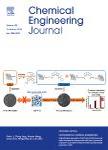版权所有:内蒙古大学图书馆 技术提供:维普资讯• 智图
内蒙古自治区呼和浩特市赛罕区大学西街235号 邮编: 010021

作者机构:College of Environmental Science and Engineering Hunan University Changsha 410082 Hunan PR China Key Laboratory of Environmental Biology and Pollution Control (Hunan University) Ministry of Education Changsha 410082 Hunan PR China Hunan Province Key Laboratory of Coal Resources Clean-utilization and Mine Environment Protection PR China Faculty of Life Science and Technology Central South University of Forestry and Technology Changsha Hunan 410004 PR China
出 版 物:《Chemical Engineering Journal》
年 卷 期:2019年第358卷
页 面:891-902页
学科分类:0817[工学-化学工程与技术] 08[工学]
主 题:Photocatalysis Heterojunction CuS/BiVO 4 Photocatalytic activity Photocatalytic mechanism
摘 要:The photocatalytic performance of BiVO 4 is restricted via the fast recombination of photogenerated carriers and low visible light absorption. Fabricating of CuS/BiVO 4 (0 4 0) binary heterogeneous photocatalysts by in suit growing of CuS on the surface of BiVO 4 can enhance the absorption range of visible light and the separation of photogenerated carriers. Simultaneously, CuS/BiVO 4 heterogeneous can provide large surface area and more active sites. The photocatalytic activity of CuS/BiVO 4 composites for Ciprofloxacin (CIP) removal was examined under visible light irradiation. The optimal mass ratio of CuS to BiVO 4 was determined to be 7%, and the first-order kinetic constant of CIP degradation over 7% CuS/BiVO 4 (0.02151 min −1 ) was 2.59 and 16.54 times of pristine BiVO 4 and CuS, respectively. The improved photodegradation efficiency is attributed to the effective separation of photogenerated carriers via formation of p-n heterojunction. The high photostability of as-prepared CuS/BiVO 4 heterojunction photocatalysts was explored by four successive cycling experiments. The detailed mechanism for improved photocatalytic performance was discussed and the possible degradation pathway of CIP was measured by Liquid Chromatography-Mass/Mass Spectrometry. The trapping experiments and electron spin resonance (ESR) spin-trapping tests confirm that holes are main active species in photocatalytic degradation of CIP.